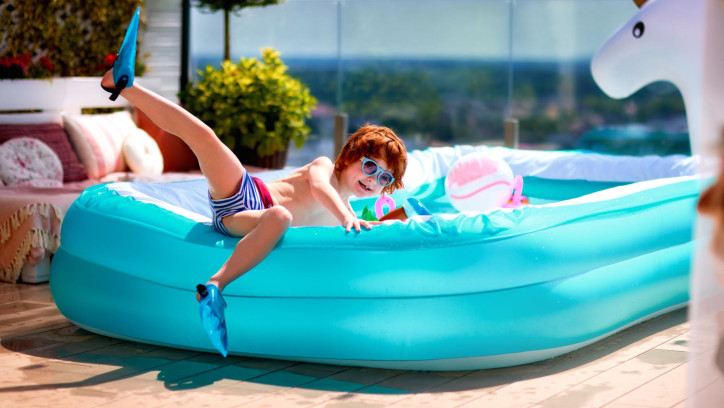Top tips for a safer summer in the pool
Posted: 21 December 2023

This means educating your tamariki on how to be safe in the water, watching them at all times and checking to make sure your pool complies with the regulations. There are regulations for both portable and permanent pools and it is important you know which rules apply to you and your pool, even if the pool is temporary. These regulations are there to protect young children from drowning, and it is important they are followed.
Research
Earlier this year, the Ministry of Business, Innovation and Employment (MBIE) commissioned research on pool safety awareness. The research found that 40% of people who own a temporary or portable pool, and nearly 50% of those considering buying one, do not know that these pools require a barrier or fence if they can hold more than 40cm of water.
Inflatable spa pools and toddler pools, pose a serious drowning risk to children. Statistics from Water Safety New Zealand’s DrownBase™ show that since 2010, 19 children aged under five have drowned in a pool at home in Aotearoa New Zealand. Since 1980, 75% of fatal drownings at home have occurred in a pool that either had a fence that did not comply with the Building Code, or had no fence at all.
Making sure your pool has a barrier or fence will help stop young children from getting into the pool unsupervised, and keep them safe around the water.
Take action!
Temporary, portable & paddling pools
If you have, or are planning to buy, a paddling pool or portable pool that is 40cm or more in depth, it will need a fence. Even if you choose not to fill your pool all the way up, if the pool can hold water to a depth of 40cm or more, it will need to be fenced. This still applies even if you only intend to use the pool for a short time.
Permanent pools
All permanent swimming pools that are filled or partly filled with water must have a fence or appropriate barrier to restrict young children from accessing the pool. If your pool wall is more than 1.2m above ground in all places, it may not require a fence. However, if you have a ladder or steps to access the pool, this access point will require fencing.
Spa pools
A spa or small, heated pool under 5m² can comply with the regulations by having either a fence, or having an approved safety cover. The safety cover must meet certain criteria to restrict access to a child under five years old, such as being able to withstand a foreseeable load and having lockable fasteners on all sides. The cover must be returned to the closed position when not in use.
Fencing your pool
Every pool fence needs a building consent before it can be installed, even if you are building the fence yourself. There are requirements for the height and design of the fence, how any gates or doors into the pool area doors are installed, and what is located outside the fence. The pool and its fence must also be inspected every 3 years by your local council.
Finding out what fencing is needed for your pool, and then making sure it is installed correctly will make sure that this summer the kids can stay safe and cool in the pool!
For more guidance on fencing your pool, please visit the safety guidance for pool owners page.
Safety guidance for pool owners
For general information on all kinds of water safety, including for pools, rivers and beaches, please visit the Water Safety New Zealand website.
Water Safety New Zealand - watersafety.org